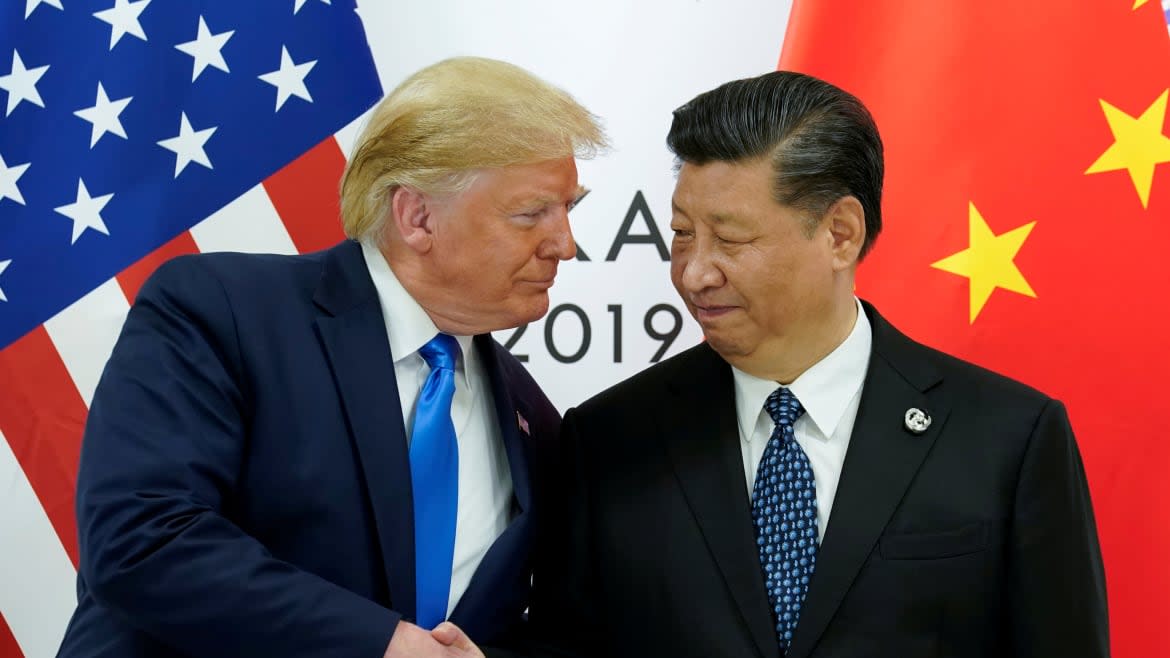Trump Bows to Xi Jinping's Huawei Demands at G20

The United States will resume sales of products to Huawei Technologies, the Chinese telecom equipment manufacturer, President Donald Trump said in his post-G20 press conference Saturday in Osaka.
The action appears to be a surrender to publicly issued Chinese demands.
Effective May 16, the U.S. Commerce Department added Huawei, the world’s largest telecom-equipment manufacturer, to its Entity List. As a result, no American company, without prior approval from the Bureau of Industry and Security, may sell or license to Huawei products and technology covered by the U.S. Export Administration Regulations.
Trump Smirked as He Surrendered Western Values to Putin at the G-20 Summit in Osaka
In recent weeks, Beijing had demanded the Trump administration withdraw the designation. On Thursday, for instance, the Wall Street Journal reported that Huawei’s removal was one of China’s three main preconditions to a trade deal. The other two demands were the lifting of tariffs Trump had imposed under Section 301 of the Trade Act of 1974 and the end to Washington’s efforts to get China to buy U.S. goods in excess of what was agreed in December 2018.
American companies had begun complying with the Entity List prohibition, but Intel, Qualcomm, and other chip suppliers have lobbied the Trump administration to ease the ban on Huawei, which American officials believe poses a threat to American national security. Washington, to inhibit Chinese spying, is trying to persuade American allies to not install Huawei equipment in soon-to-be-built 5G telecommunications networks.
Trump, however, undercut these efforts Saturday by making it appear that his Huawei campaign was merely a tactic to gain an advantage in the so-called “trade war” with China.
Trump, in response to a reporter’s question at the Osaka press conference, refused to confirm he would be taking Huawei off the Entity List, and he did mention there would be a meeting Sunday or Tuesday on the topic. Nonetheless, the president’s initial words made it clear that his administration would resume the flow of high-tech American products to the embattled Chinese company.
Trump’s just-announced concession on Huawei mirrors his reprieve last May of ZTE, another large Chinese telecom-equipment maker. Trump, in what he described as a “personal favor” to Chinese ruler Xi Jinping, removed ZTE from the Entity List.
Trump, in his initial comments at the press conference in Osaka, said that Huawei matters would be decided at the end of the trade talks. Presumably this is a reference to efforts of his administration last month to prevent the company from selling telecommunications equipment to American network operators—Trump last month issued an executive order on the subject—and perhaps a reference to the Justice Department’s criminal prosecutions of Huawei and its chief financial officer, Meng Wanzhou. The U.S. has filed an extradition request for Meng, currently held in Vancouver.
Trump also mentioned at the press conference that he would not be imposing any additional tariffs on Chinese goods. Previously, he had threatened to tariff an additional $325 billion of such products.
In other comments, Trump said trade talks would resume and that China had agreed to start buying American farm products.
Is a Trump-Kim DMZ Photo-Op in the Works?
In short, Trump’s actions, as he detailed them at the Osaka press conference, were nothing short of extraordinary, apparently dropping actions to further American national security in order to obtain China’s purchase of primary products.
The American president may eventually say he did not do that, but it is clear that Xi Jinping has just shown the world who’s boss by forcing his American counterpart to accede to his widely publicized demands.
It looks like Trump just surrendered to China.
Get our top stories in your inbox every day. Sign up now!
Daily Beast Membership: Beast Inside goes deeper on the stories that matter to you. Learn more.


